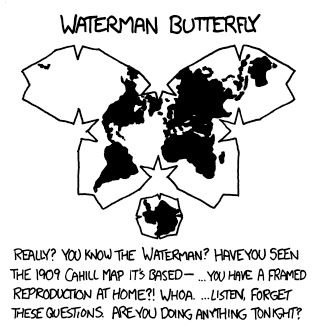i dont understand the reasoning of this map’s color code choices
Maybe they were thinking: Red means stop (work), Green means go(to work).
Or maybe: red for communists, green for money 🤑
oh how I wish all these countries would be comunist!
The CIA would never let that happen.
Capitalism International Associates?
¯_ (ツ) _/¯
In Australia it varies by state. Only Queensland and the Northern Territory celebrate the early May Labour Day (and the NT calls it “May Day” rather than “Labour Day”). On the 1st of the month, but the first Monday in May.
I think other states have it at different times for a variety of reasons. Part of it is a deliberate effort to disempower the day from its international meaning. But it’s also about spreading out public holidays. After two public holidays for Easter in late March/early April and ANZAC Day on 25th April, Labour Day being the first week of May is a lot of public holidays in a very short time.
Thanks for sharing!
TIL that the May Day bank holiday is “labour day”
The fact that the UK calls public holidays “bank holidays” is the most adorable quaint thing you guys do.
Anyway, there’s some nuance here. I think the Wikipedia section for the UK on “international worker’s day” says it quite well:
A public bank holiday in the United Kingdom known as May Day was created in 1978 and is held on the first Monday in May each year.
There are many traditional May Day rites and celebrations, some of which have been held for hundreds of years. However, it was not until the late 20th century that May Day in Great Britain became linked to International Workers’ Day, and the holiday is not officially a “Labour Day”.
If they called it Labour Day, that uppity working class might think they have some kind of value.
/s
In Australia where I am from we have it the first Monday of May rather then a set day so it’s always a long weekend.
Other parts of the country are the first Monday of October for whatever reason but I’m assuming better weather.
Same for May in UK and probably a fair few former territories, but I think some places get two days off (Spain?) which may be even better
edit: the UK actually should be yellow here, as there’s no Labour Day at all, but there is a public holiday on the 1st Monday in May, whereas green means Labour Day exists but can’t fall on 1st May
Er, May Day in the UK has absolutely nothing to do with Labour Day or International Workers Day. It’s just another Beltane derived festival where people dance like twats with sticks or around a big pole.
Technically Austria should be yellow, as officially our “state holiday” on May 1st is on that day for no particular reason and shares its date with Labour Day by accident… though of course everybody knows that this was an excuse to make it a holiday without causing a political fight.
In the USA, May 1 is Loyalty Day, as it has been since the McCarthy era.
The date, May 1, was set in order to counter International Workers’ Day and was recognized by the U.S. Congress during the height of the Second Red Scare.
It’s so symbolic that Worker’s Day is taken to be an opposite of loyalty to the US.
The yellow color of Finland is weird. We call it Vappu, or Walburgs Night, but it’s indeed a paid holiday labour day.
Doesn’t the legend say “another public holiday on May the 1st”?
My point was it’s the same thing, with local name pretty much.
TIL 1. May is an international event
Here just this morning we were talking about this at work, chat gpt answered it:
The distinction between International Workers’ Day on May 1 and Labor Day in the United States, which is celebrated on the first Monday in September, arises from historical and political reasons. While International Workers’ Day was established to commemorate the Haymarket affair and to symbolize the struggles and solidarity of the labor movement worldwide, the U.S. government chose to avoid celebrating Labor Day on May 1, partly to dissociate it from any socialist and anarchist movements that had adopted May Day as their day of celebration.
Instead, the United States adopted Labor Day as a federal holiday in 1894 following a proposal by the labor movement to honor the American worker. The choice of September was influenced by the successful first celebration of Labor Day on September 5, 1882, in New York City, organized by the Central Labor Union. This date was selected partly because it was midway between Independence Day and Thanksgiving, providing a holiday in the long gap between the two. The decision effectively provided a distinctly American identity to the holiday, focusing on celebrating the economic and social achievements of workers, separate from the more politically charged connotations of May Day.
In Canada it’s the first Monday in September.
At least Alberta, anyway.









